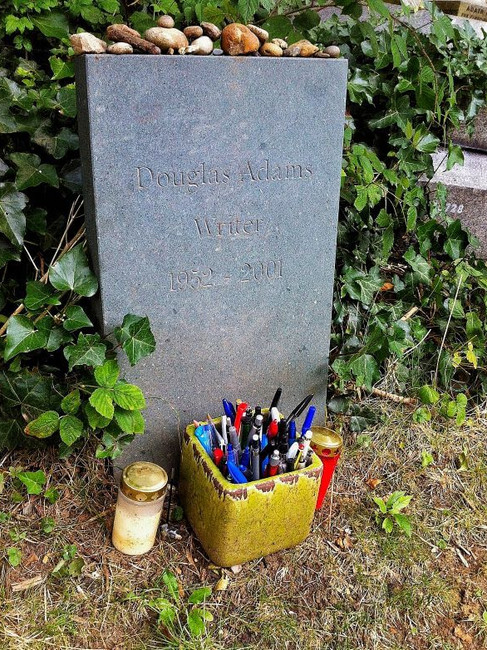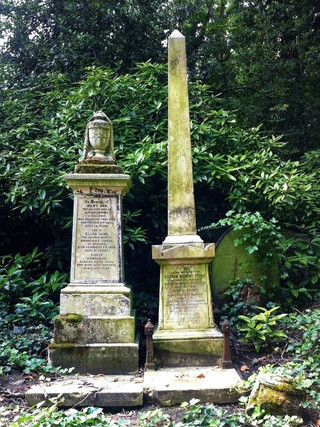A tour of London's Highgate Cemetery
- Pierre
- Jun 2, 2020
- 5 min read
Updated: Jan 2
There's something about a cemetery. Something strangely alluring... A feeling that's just out of reach, can't-quite-put-your-finger-on-it.
Having just finished writing a review of the incredible Okuno-in cemetery on Japan's must-visit Mount Koya, it got me thinking... What is it about cemeteries that so fascinates us?
Is it the sense of the unknown - the inscrutable mystery that lies on the other side of the Great Divide?
Or a morbid fascination with death itself, and the fact that none of us will in the end escape the Grim Reaper's visit?
Maybe it is a desire to maintain some sort of tenuous link with our pasts, with those who have gone before?
Or maybe it is simply the mood of them - the mysterious mysticism and the peace and serenity that seem to be the eternal character permeating a graveyard.
Whatever it is, I've always found myself drawn to them, and whenever we travel to a place with a big-ticket cemetery it's always a non-negotiable item on the itinerary.
Luckily for us, living in London it is not necessary to go far to find an example of an exemplary graveyard: for that, look no further than Highgate Cemetery in the north of the capital.

Highgate is the most well-known of London's 'Magnificent Seven' cemeteries, graveyards which were constructed around the 1830's in an effort to encourage burials on London's then-outskirts. Overcrowding in the central churchyards had at that time become a health concern, as well as impeding the construction of new buildings in what was a rapidly growing city.
Today, classified as a Grade 1 Historic Parks and Gardens site, as well as officially designated a nature reserve that is lovingly maintained by the Friends of Highgate charity, it makes for a tranquil space to amble around as well as visit some famous graves.
The cemetery is also still in use as an active graveyard, and is one of the most prized burial locations in the capital. Even a modest plot in the East Cemetery will set you back a spine-chilling £20k or so; should you prefer to take a dirt nap alongside George Michael in the more fashionable West Side, expect to pay an arm and a leg.
Highgate East Cemetery
Highgate Cemetery is split into 2 parts, and we began our visit in the East Side - the more recent of the 2 sites which was purchased in 1860, and where the majority of the current burials take place.

It is possible to wander around here on your own, and the East Side has everything a good graveyard should. There are the tombstones, cracked and marred, the names of their occupants barely legible after decades of weathering. There are stone sarcophagi, modest and ornate - family graves where generations can pass their eternal slumber side by side. There is iconography both religious and not - saints and angels, obelisks and urns - around every corner.
And as we wandered down peaceful lanes with the dead for company, gravel underfoot and trees overhead, we took it all in. These moody monuments to the once-living, cradled amidst the ever-present ivy slowly reclaiming everything.
We came upon the East Side's most famous inhabitant - Karl Marx. In truth, he was impossible to miss, his ostentatious tomb adorned by a larger-than-life bust donated by Britain's communist party. This final resting place of the father of communism remains a contentious site today, and is frequently the subject of vandalism. And the irony of his grave being situated in a private burial site which is not free to enter was not lost on us either.
A little further on we found a far simpler memorial - a modest tombstone sporting a name to warm a sci-fi fan's heart: Douglas Adams, writer of The Hitchhiker's Guide to the Galaxy, a trilogy in 5 books. And by his plaque a basket of pens left by his admirers, a humble but fitting tribute to this literary great.
Highgate West Cemetery
By now it was time to head over to the entrance to the West Cemetery, where our tour was about to start. Entry to the West Side is by tour only, spaces for some of which are available in advance, so check the cemetery's website and plan accordingly.
The Highgate West Cemetery burial site is the slightly older of the 2, dating back to 1839, and has a more storied history. Accounts of the occult featuring vampires, stakings and dueling magicians - all are part of the fantastical lore of this graveyard.
Originally a fashionable and highly desirable place for burials, the cemetery showcases some elaborate architecture in the Victorian Gothic style. After the turn of the century though, and the increasing desire for less flashy funerals, the cemetery began to face financial setbacks, and by the 1960's was bankrupt.
A decade later the Friends of Highgate began the job of restoring the cemetery to its former glory, as plant life had taken over much of the cemetery in the intervening years. And even though today the West cemetery is magnificent, with some beautifully renovated and impressive tombs on display, there remains a sense of wildness to it that adds to the atmosphere of the surroundings.
The West cemetery has its fair share of famous occupants, amongst the more recent of which is of course George Michael - though his grave was not visited as part of the tour. Another is Alexander Litvinenko, the Russian defector so infamously poisoned in London in 2006 by Russian FSB agents, whose body was so radioactive that it had to be buried in a lead-lined coffin.
We wandered amongst the gravesites as our tour guide pointed out particular names and some of their history, or specific features of tombstones and what they signified.
But what really made this cemetery so special was the feel of it. There were the beautiful headstones, statues and other carvings, which gave that particular mix of mystery and macabre so typical of a graveyard. And everything was surrounded by nature almost 2 centuries old - the lush dense plant life that enveloped everything, the tunnels of treelined avenues down which we meandered, the blotchy stones stained lichen-grey or mossy-green.
Egyptian Avenue, the Circle of Lebanon and the Catacombs

We arrived at Egyptian Avenue - its entrance flanked by obelisks - a tunnel that was covered in a dense ivy that lent it a forbidding air. Past ancient doorways leading into family crypts, the mortar cracked and crumbling, we made our way up to the Circle of Lebanon.
This is perhaps the most recognisable of the West Cemetery features, and certainly one of the most impressive - these vaults dug into the hillside were bought by the well-to-do and house entire families. This ring of lavish mausoleums in the Egyptian architectural style is certainly photogenic, and has been the site for many a film, including the Fantastic Beasts franchise.


Next our tour guide led us into the Terrace Catacombs - 6-feet under in this vaulted brick gallery we found ourselves surrounded by the dead, coffins piled high in recesses to either side, sombre light filtering down through the periodic openings in the roof.
Then once more back into the open air, we followed pathways through lush gardens and flower beds back to the entrance colonnade, where we found ourselves at the end of our tour.
Highgate Cemetery review
Our visit to this special north-London cemetery was at once atmospheric and informative, and the tour led by the tour guide both memorable and moving. A trip to Highgate Cemetery, one of London's more enigmatic and off-the-beaten-track attractions, is absolutely a journey worth making!










Comments